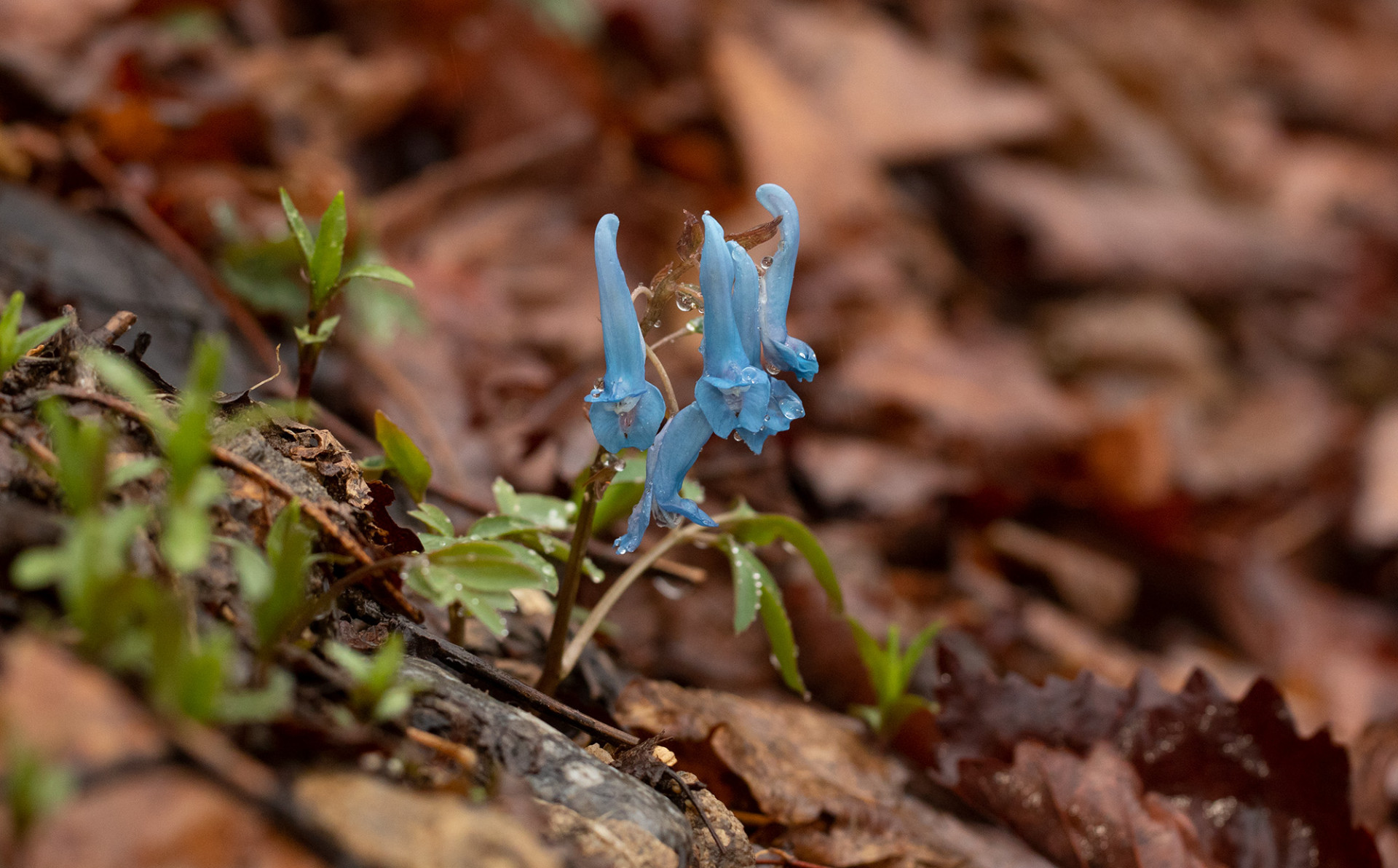
Our expert team built upon last autumn's adventure and set off once again—making it the third time—to distant Asia for a botanical expedition. The goal was to gather crucial photographic documentation and information from the plants' natural habitats. These materials will not only contribute to a new exhibit focused on Korean flora but will also be used for an upcoming book and a planned exhibition in 2025. We extend our gratitude to our partner, Hyundai, for supporting the entire team and the expedition. |
Our adventure began with visits to two stunning national parks: Seoraksan and Odaesan. In Seoraksan, we were greeted with sunny weather, highlighting the beauty of the surrounding nature. We explored altitudes from 200 to nearly 800 meters above sea level. Freshly sprouting leaves appeared on the trees around us, and two species of rhododendrons—R. mucronulatum and R. schlippenbachii—stunned us with their beauty. There were also blooming herbs like the small Iris rossii, many types of violets, and several species of Corydalis with sky-blue flowers. It was fascinating to see up to four species of Corydalis in one location.
Unfortunately, we encountered rain in Odaesan National Park. We moved to higher altitudes, ranging from 600 to 1300 meters above sea level. Rhododendron mucronulatum was in full bloom here, although many herbs had closed flowers due to the rain. We saw large patches of Erythronium japonicum, three species of golden saxifrage, and several kinds of anemones, including the unique Anemone reflexa with its intriguing tongue-shaped flowers.
We were fortunate with the weather in Taebaeksan National Park, where conditions improved significantly. Around Mount Hambaeksan, we discovered how the mother rock's influence affected plant distribution. Geological substrates shifted over short distances, affecting the diversity of vegetation. Our findings included Erythronium japonicum and Corydalis grandicalyx with its vivid blue flowers. On the northern slopes of Mount Taebaek, we found species-rich areas, where Hylomecon vernalis, Adoxa moschatellina, and Anemone reflexa were growing.
The journey continued to Geoncheon-ri, south of Daejeon, where we encountered one of the most botanically interesting sites. Limestone soil here supports a rich variety of species. We discovered Eranthis stellata, Iris rossii, several Arisaema species, and peonies like Paeonia obovata. A unique moment occurred when we encountered a venomous Gloydius ussuriensis snake.
Although Mount Daedunsan captivated us with stunning views, its geological composition resulted in low plant diversity. In contrast, in Songnisan National Park, we found lush growth northeast of Beopjusa Temple. Highlights included the orchid Cephalanthera subaphylla and a large area with recently faded bamboo, creating a unique atmosphere.
Our journey concluded with a visit to the National Institute of Ecology's garden near Maseo-myeon, which hosts an extensive collection of Korean plants. Here, we found many species not seen in other parts of Korea, such as Arisaema ringens and Corydalis incisa. Our final exploration took place south of Taean, where we discovered the endemic Hemerocallis taeanensis and three species of orchids.
This expedition provided us with valuable information on Korean plants and their ecology, as well as a rich collection of photographs for an upcoming book and exhibition.
We are very grateful to Hyundai Motor Czech for making this journey to South Korea possible.